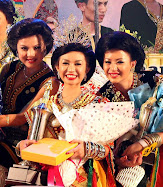As tension in the Korean Penisula continues after North Korea shelled Yeonpyeong, a South Korean island with artillery fires on Tuesday, 23rd November 2010, nearby Japan was also jolted by a powerful force, exactly a week after the North Korean attack.
But it was not North Korean bombs or missiles, but rather a 6.9-magnitude earthquake.
The earthquake struck off Japan's southern coast Tuesday, 30 November 2010, shaking a broad swath of the country and swaying buildings in downtown Tokyo.
The Associated Press reported that no damage or injuries were immediately reported, and Japan's meteorological agency said there was no danger of a tsunami.
The temblor hit at 12:25 p.m. local time (0325 GMT), with the epicenter near the Ogasawara Islands, about 500 miles (800 kilometers) south of the main Japanese island, the agency said.
It struck at a depth of 300 miles (480 kilometers).
Japan's meteorological agency reported a magnitude of 6.9, however, the U.S. Geological Survey said the quake was 6.6. The reason for the discrepancy was not immediately clear.
The Ogasawara are known as the Bonin Islands outside of Japan.
Japan is one of the most earthquake-prone countries in the world. In 1995, a quake of magnitude 7.2 killed 6,400 people in the western port city of Kobe.
Meanwhile tensions in the Korean Penisula continues, a week after Kim Jong Il attacked Yeonpyeong island, killing 2 South Korean Marines personells.
Yonhap News Agency on Tuesday, 30th November 2010 reported that South Korea's military plans to toughen its rules of engagement with North Korea in a way that gives its troops greater leeway to determine the intensity of a counterattack by the level of damage and threats received, the defense ministry said Tuesday.
The revision plans came amid mounting public criticism in South Korea that the country's military responded too slowly and too weakly to North Korea's Nov. 23 artillery strike on Yeonpyeong Island, which killed four people, including two civilians, and wounded 18 others.
The envisioned change, reported to the National Assembly, will free South Korean forces from the existing regulations that stipulate they should respond to an enemy attack with the same kind of weapons and the same amount of firepower the enemy used.
"We plan to make supplements to guarantee conditions for punishing the enemy," the ministry report said.
The military also plans to give greater leeway to field commanders in counterattacks and give more power to the chairman of the Joint Chiefs of Staff in order to help the military respond to an enemy attack in a timely manner, the ministry said.
"We plan to differentiate the levels of responses to attacks on the military and attacks on civilians," the ministry said. Revision of the rules of engagement will be made in consultation with the U.S.-led United Nations Command and the South Korea-U.S. Combined Forces Command, it said.
The military also said it plans to seek a 360 billion won (US$310 million) additional increase in its budget for next year to beef up firepower on Yeonpyeong and other front-line islands, including deploying K-77 armored vehicles and K-10 ammunition supply vehicles.
Multiple rocket launchers and anti-artillery radars have already been deployed to Yeonpyeong. In case of further provocations by North Korea, the UNC will provide support, the ministry said.
Video Bung Moktar Layan Anak-Anak Sebelum Pemergian Raih Pujian Ramai –
“Lembutnya Seorang Ayah…”
-
Sebuah video tular di Threads memaparkan Allahyarham Datuk Seri Bung Moktar
Radin melayan anak-anaknya dengan penuh kelembutan , sekali gus mengundang
ra...
1 hour ago

































No comments:
Post a Comment